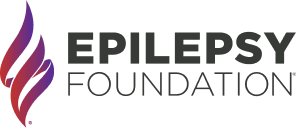Recent Studies on Vagus Nerve Stimulation Therapy
Epilepsy News From: Tuesday, December 12, 2017
Articles Reviewed
- Fraschini M, Demuru M, Puligheddu M, Floridia S, et al. The re-organization of functional brain networks in pharmaco-resistant epileptic patients who respond to VNS. Neuroscience Letters 580(2014):153-157.
- Englot DJ, Hassnain KH, Rolston JD, Harward SC, et al. Quality-of-life metrics with vagus nerve stimulation for epilepsy from provider survey data. Epilepsy & Behavior 66(2017):4-9.
Purpose
- About 30% of the people living with epilepsy fail to respond to anti-epileptic drugs (AEDs). These are called refractory cases.
- In a subset of this population, vagus nerve stimulation (VNS) might be a viable option.
- On epilepsy.com, we have talked about the basics of VNS, its use in refractory epilepsy, and, very recently, a next generation novel implantable generator VNS system (SenTivaTM).
- The VNS device delivers electrical impulses to the vagus nerve (the tenth cranial nerve) to limit seizures.
- However, the exact mechanisms by which the VNS is effective in epilepsy is not fully known.
- Today, we will summarize two articles about VNS: one study published in the journal Neuroscience Letters where scientists tried to figure out the mechanism behind VNS by looking at patient EEG (electroencephalogram) and the other study published in the journal Epilepsy & Behavior where a separate group of scientists looked at effects of VNS on quality of life.
Description of studies
In the Neuroscience Letters study published in 2014, the authors compared two groups of people with refractory epilepsy: a group where people responded to VNS versus one a group where people did not respond to VNS.
- Everyone had EEG testing before and after the VNS implantation.
- The following two measures were examined to give an indication of connectivity between brain structures
- The phase lag index (PLI)
- Minimum spanning tree (MST)
In the Epilepsy & Behavior study published in 2017, the authors analyzed metrics related to quality of life in people who had the VNS implanted for refractory epilepsy. Physicians subjectively assessed outcomes like
- Memory
- Seizure frequency
- Mood
- Professional/educational achievements
- Verbal communication skills
Summary of study findings
- In the first EEG study, PLI and MST revealed that people who responded to VNS therapy had functional reorganization of the neuronal network as comparted to people who did not respond to VNS. It could be that this network reorganization drives the effectiveness of VNS.
- The second study showed that patients with VNS implantation had an improvement in quality of life measures. Specifically, there was a decrease in seizure frequency and improvements in memory, alertness, verbal communication, and mood.
What does this mean?
- The general usefulness of the VNS in some people with refractory epilepsy has been known for years. However, there are some gaps in knowledge. For example, the mechanism by which VNS is effective and the exact benefits to people living with epilepsy were unclear.
- By knowing what EEG characteristics are associated a favorable response, EEG could be used as a biomarker for effective therapy.
- The benefits of VNS Therapy may include mood and memory improvement as well as increased seizure control.
Authored by
Sloka Iyengar PhD
Reviewed by
Joseph I. Sirven MD
Reviewed Date
Tuesday, December 12, 2017
